The full-time-employee model is one that has been used for more than a century, and that’s the problem.
The work we’re doing in 2021 is not the same work we were doing in 1868, when the eight-hour workday began to spread across America. Industries have evolved rapidly, however, workforce culture has remained stagnant. Just look at the minimum wage. That baby has held steady at $7.25 an hour since 2009. When adjusted for inflation and productivity, minimum-wage workers should be getting $19.33 an hour. Likewise, many businesses are losing their overhead on redundancies, just because that’s the way things have always been. For example, renting an office space is no longer necessary for industries where technology allows employees to connect virtually.
The workforce has been on the verge of a tipping point for some time, however, the COVID-19 pandemic tipped us over faster than we expected. And after the initial shock, business owners are seeing benefits of the emerging model, which includes more virtual opportunities, streamlined processes, and an influx of contract workers that are helping to lead the charge of the future of work.
Within the past year alone, contract workers in the United States skyrocketed, with two million contractors added to the workforce since 2019. Additionally, more than half of Americans performed some type of contract work in 2020.
In order for businesses to thrive, they need to evolve with their workforce. That actually isn’t a bad thing for their bottom line. Here’s why.
Employees come with many hidden costs.
An employee’s salary isn’t the only cost that comes with a new hire. There are plenty of costs many people don’t think of before beginning the hiring process. In fact, you’re losing money even before the employee is hired. Your team’s time is taken away from their daily duties to help find the right candidate.
Paying employees to be part of the hiring process takes away from their contributions to the company.
That’s just the beginning. When you pay an employee, expect to also pay for:
- Benefits
- Vacation, medical, 401K contributions, and more all contribute to employee benefits packages. According to the U.S. Department of Labor, this amounts to:
- $38.26 per hour worked by civilian workers in September 2020
- $35.95 per hour worked by private-industry workers in September 2020
- $52.94 per hour worked by state and local government workers in September 2020
- Vacation, medical, 401K contributions, and more all contribute to employee benefits packages. According to the U.S. Department of Labor, this amounts to:
- Overtime
- According to research by Circadian, “If overtime is equally distributed across employees, up to approximately 12 percent overtime is an acceptable overtime rate for a workforce.”
- Worker’s compensation insurance
- More than 500 work-related injuries happen per hour
- Small businesses average $400-$800 per month on insurance
- Federal employer payroll taxes
- Employees and workers both contribute 6.2 percent of an employee’s wages toward Social Security taxes
- FUTA taxes
- These taxes cover unemployment and employer’s cover 0.6 percent on average
- In 2019, federal UI taxes totaled about $41.2 billion.
- Any state and local taxes
- Varies based on location
Unlike full-time employees, flexible talent manages these costs on their own.
This all goes to show that a higher hourly rate doesn’t mean flexible talent is more expensive.
When the real cost of a contractor that is $70 an hour and a full-time employee that averages $70 an hour is compared, the costs of the full-time employee are much higher. When the overall cost of the full-time employee is factored in, the total annual cost for the company is $289,744. Compare that to a contractor, which runs the company $145,600 annually.
Businesses may be paying a higher hourly rate but by hiring flexible talent, they are not responsible for costs related to employee insurance, payroll taxes (which also include social security and medicare costs), bonuses, and/or 401K contributions. Over the course of an employee’s time at the company, that’ six-plus figures saved by hiring contract.
It’s difficult to see these costs, as they are built into the company’s infrastructure. But the costs are there, and they could drastically be minimized.
Flexible talent manages their own business expenses.
Rent is costly for business owners. It always has been and it always will be. The more full-time employees on a team, the more office space needed to house them.
Prior to the COVID-19 outbreak, companies were spending an unnecessary amount on physical space. Now that COVID-19 has shown us we can be efficient and effective remotely, office spaces are either no longer necessary or can be significantly downsized.
This also means a reduced need for office supplies. Providing employees with professional equipment such as printers, computers, and more adds up. Now include the little things like pens, staplers, notepads and that is one hefty bill.
Accounting, HR, supplies, professional development, travel, gadgets, books, and other company must-haves are no longer a financial concern when going the flexible talent route. It’s a simple exchange of product and payment, with the talent delivering on the project and the client issuing payment.
This relationship also makes paperwork simpler, as flexible talent only needs to fill out one form. Unlike a full-time employee, businesses aren’t responsible for managing the talent’s payroll taxes. If the talent needs help managing their cash flow or taxes, it’s on them to hire an accountant.
Flexible talent is also responsible for their own working set up, whether that’s an at-home office or a rented space. This also includes any office supplies or administrative tools needed to carry out their work.
Flexible Talent provides high-quality work
Flexible talent is typically highly educated and skilled, with the number of skilled, independent professionals only rising. This means the client is getting higher-quality work by putting a contractor on a project.
When a person has high-level skills, there is less time spent supervising them. When business leaders don’t need to supervise an employee, more time is freed for important business ventures.
And if the talent’s work is not up to a business’ expectations? Parting ways is simpler and more cost-effective as well. Companies are not required to offer terminated flexible talent with a severance or benefit payouts. Just make sure expectations are clearly defined in the initial contract.
Talent-matching platforms make the process more efficient.
There are now 330 companies dedicated just to matching independent contractors with clients. In 2009, there were only 80 talent-matching platforms.
Platforms like FlexTal, Upwork, Fiverr, and more make hunting and hiring talent much easier. Each platform hosts a wide range of flexible talent, prepared to onboard a new project at the ready. With the average hire taking 42 days, business leaders get bogged down and backed up. The hiring process is drastically cut, allowing more time for company employees to focus on what’s most important.
While any contractor can join a platform, models like FlexTal have a rigorous vetting process that gives companies access to the top three percent of flexible talent. Going through a talent-vetting platform further ensures high-quality work from the talent.
Over the past year, business leaders have caught on to the financial benefits of hiring contract talent. With businesses needing to cut costs due to the pandemic and many Americans out of work, flexible work is a win-win.
Lindsay Patton is a self-employed writer and social media strategist. A leader for most of her career, Lindsay has managed more than 250 direct employees and loves mentoring young talent to help grow their skills. She spent seven years as a reporter and editor and is still an active writer and journalist. In 2016, Lindsay started taking social media seriously and the skill quickly became one of her specialties. Within the past two years, Lindsay has been invited to speak on social media and leadership in the workplace by Ernst & Young, Social Media Day PHL, The W.E.L.L. Summit, and more. She has found happiness in the self-employed life because it allows her the flexibility to spend quality time with her husband and their two goofball dogs.




